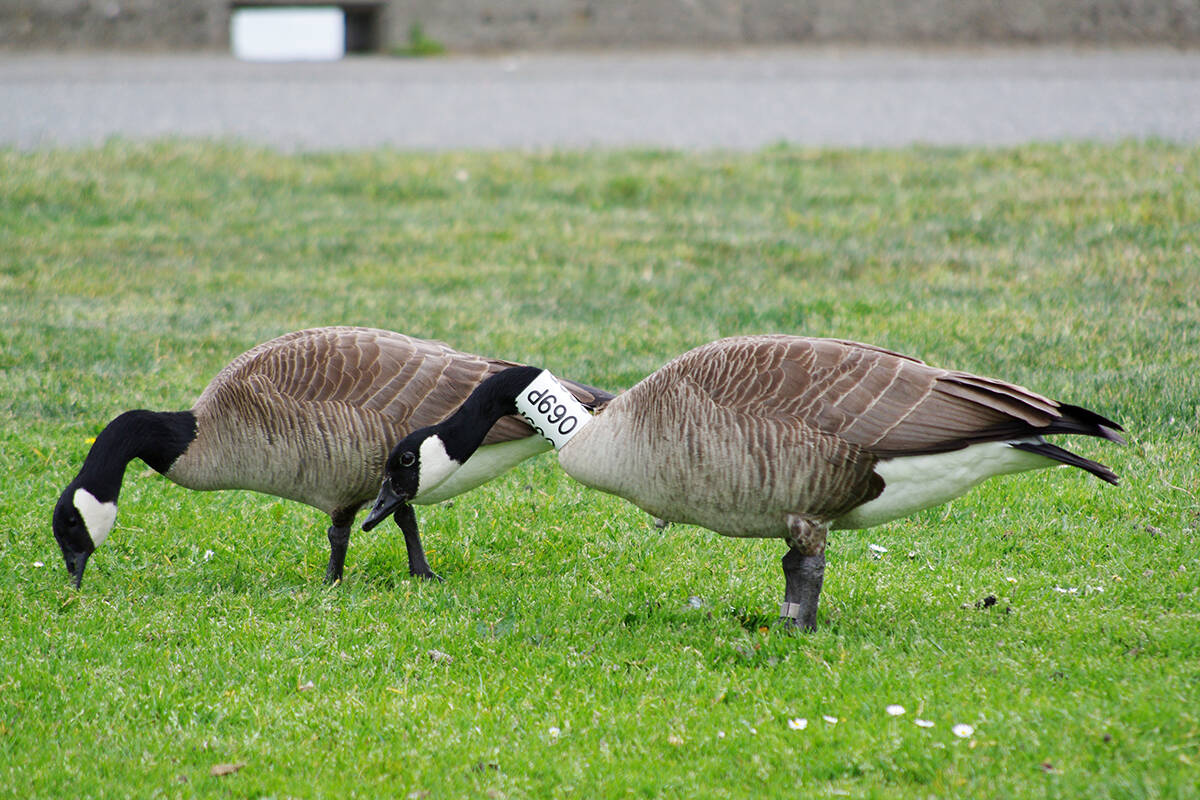Mountain ranges tend to be barriers for most migrating fowl, but one Canada goose, tagged as part of a research project in Nanaimo, managed to make its way to a park in Chicago.
Why the bird ended up 3,000 kilometres from its home turf is a mystery.
Eric Demers, a biology professor at Vancouver Island University, said the bird was tagged in 2016 and was one of about 400 geese that VIU biology students banded and collared over two years. The neck collars display highly visible letters and numbers that people can use to report a bird’s identity and location to the VIU Canada Goose Project website.
“All of these collars are approved by the Canadian Wildlife Service and so nobody else would have the same type of collar,” Demers said. “We know that if somebody finds a code on that kind of collar it has to be ours.”
The goose wearing collar No. 085P was spotted by a woman in Lincoln Park in Chicago on the shore of Lake Michigan in October. She told her husband about it and he reported the sighting. Demers said the woman was contacted via e-mail to confirm the sighting wasn’t a hoax or mistake.
Demers said Canada geese can live 15 to 20 years. The majority of birds banded in Nanaimo simply winter in the area and don’t fly much farther than Sechelt or Victoria, the professor said.
“About 10 or 15 per cent … have shown up as far away as Washington or Oregon, and with Oregon it’s often in the Eugene area. We don’t know why,” he said.
Demers said what he refers to as “original” Canada geese fly every year from from California, Oregon, Washington and southern B.C. to Alaska to breed. But in the 1970s and ‘80s, he said, young geese were transported without their parents to Vancouver Island from Saskatchewan for hunting purposes.
“Geese need to be shown where to go to migrate. Without parents, these guys came here and they said, hey, the winters aren’t so bad. Let’s stay put,” Demers said.
Why one goose travelled all the way from the Harbour City to the Windy City is unknown. Demers said it could have been blown off course by a storm.
“Maybe its compass was not organized right. Maybe it caught a flight of some other geese, although most geese that migrate a lot here stay on the coast side, so I don’t know that there are east-west migrating birds it would have hitched a ride with,” Demers said.
The last time the bird’s tag was recorded in Nanaimo was in 2017, which means the goose likely established itself here. Once they do that, the professor said, they’re unlikely to change their migratory habits and usually stay local.
The joint goose research project between VIU and the city is ongoing and headed by former VIU biology student Stewart Pearce. To learn more about the program, visit http://wordpress.viu.ca/gooseproject.
READ ALSO: Nanaimo News Bulletin’s top 10 most-memorable animal stories of 2021
READ ALSO: Nanaimo News Bulletin’s top 10 most-memorable animal stories of 2020
READ ALSO: Nanaimo News Bulletin’s top 10 most-memorable animal stories of 2019
photos@nanaimobulletin.com
Like us on Facebook and follow us on Twitter

